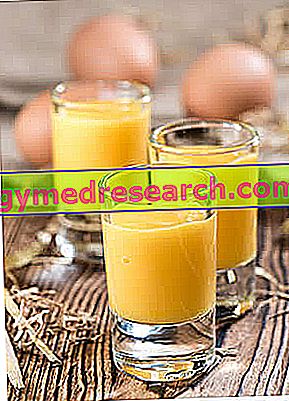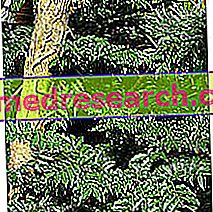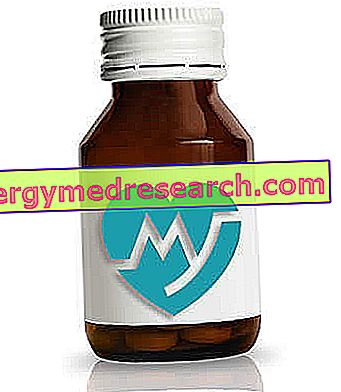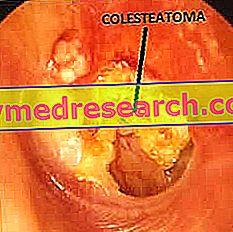What is the Zabaione?
For zabaione - or zabajone or zabaglione - is meant a typical sweet pastry food.
Recently some salted and / or flavored variants have been proposed, which serve as accompaniment (like a sauce) for dishes, side dishes, appetizers etc. In addition, the zabaione has inspired the creation of various recipes, such as liqueurs (zabov, VoV), ice cream and frozen desserts.
Ingredients

- egg yolk (generally of hen)
- granulated sugar (usually beetroot sucrose)
- an alcohol source (usually white wine, brandy, cognac or marsala).
Appearance and Flavor
The zabaglione has the appearance of a light cream, softer than the pastry but less liquid than the English cream.
It has a typically yellow color (given by the carotenoids of the yolk), a penetrating aroma of fresh eggs and wine or liqueur, and a taste so sweet how abundant is the portion of the sweetening ingredient; overall, the flavor of the zabaglione is characteristic to say the least and varies considerably based on the presence or absence of the cooking process (strictly in a bain-marie).
Eggnog is known to be a fortifying, invigorating, energizing and nourishing food. Once upon a time, it was recommended to children and young boys, to perished subjects and to anyone who felt the need to recover quickly.
Video Recipe
Zabaione or Zabaglione
X Problems with video playback? Reload from YouTube Go to Video Page Go to Video Recipes Section Watch the video on youtubeNutritional Features
Referring obviously to the traditional one, below we will briefly summarize the chemical properties and the metabolic impact of the famous zabaione.
Eggnog is a very caloric food, having an energy distribution in favor of carbohydrates, followed by alcohol, then by lipids and finally by proteins. Carbohydrates are simple and consist of sucrose (sugar); peptides have a high biological value and the prevailing fatty acids are unsaturated (monounsaturated).
Nutritional values | ||||||||||||||||||||||||||||||||||||||||||||||||||||||||||||||||||||||||||||||||||||||||||||
| Nutritional Composition per 100g of Eggnog | ||||||||||||||||||||||||||||||||||||||||||||||||||||||||||||||||||||||||||||||||||||||||||||
 | ||||||||||||||||||||||||||||||||||||||||||||||||||||||||||||||||||||||||||||||||||||||||||||
| ||||||||||||||||||||||||||||||||||||||||||||||||||||||||||||||||||||||||||||||||||||||||||||
Eggnog contains a large amount of cholesterol, while fibers appear to be absent.
From the saline point of view, the zabaglione contains an excellent amount of highly bioavailable iron and phosphorus. With regard to vitamins, the content of vit stands out. A (retinol and carotenoids) and vit E (tocopherols).
Eggnog is a food that does not lend itself to frequent and systematic consumption, let alone to clinical nutrition. In fact, it is certainly a recipe rich in useful nutrients, but also in undesirable or excess molecules.
CALORIES
Keeping in mind that it is a liquid food, it is necessary to point out that, as a matter of "practicability", the average portion should be around 200-250g, or 335-415kcal.
As a snack, but also as the only ingredient in breakfast (around 15% of total calories), an average portion of zabaglione is energetically excessive in any diet lower than 2500kcal. Therefore, considering an average caloric requirement of about 2000kcal (healthy adult), frequently consuming the zabaglione increases the risk of gaining weight or nullifying the effect of a possible weight loss diet.
Alcohol
The presence of ethyl alcohol, in addition to precluding its use in the diet for children and for subjects with liver disease or hypertriglyceridemia, affects the daily consumption of alcohol. To be precise, a 200-250ml portion of eggnog contains 150ml of white wine, or more than a single alcoholic unit (120ml of wine).
Cholesterol
Observing the cholesterol supply of the zabaglione, it is evident that it should be included in the diet only occasionally. Referring again to the 200-250g portion, the eggnog brings about 547-683mg of cholesterol, which represents a surplus of 247-383mg (for a healthy subject).
Remembering that, in the daily diet, many other products contribute to the intake of cholesterol (meat, fish, milk and derivatives etc.), it is really very difficult to contextualize it within the ordinary diet. Furthermore, considering that a person suffering from hypercholesterolemia should not exceed 200mg / day of exogenous cholesterol, it is logical to say that this food should be excluded from clinical nutrition aimed at reducing blood lipid levels.
sugar
Even the considerable quantity of sucrose compromises the dietary relevance of the zabaione. In fact, it should be remembered that simple sugars should not exceed 10% of heat in individuals with type 2 diabetes mellitus and 15% in healthy ones; it is also necessary to keep in mind that other daily foods may also contain sucrose, fructose or glucose (honey, fruits, vegetables, sweets, drinks, etc.). With reference to the aforementioned portion and to the average caloric intake of a healthy adult, the zabaglione contains about 50% of the simple sugars advisable (assuming a desirable percentage of 12.5%); it is therefore a recipe to be excluded in the diet for type 2 diabetes mellitus and for hypertriglyceridemia.
NUTRITIONAL PRIORITIES
The only positive nutritional characteristics concern the iron content, very useful in case of anemia, and the content of some vitamins.
Types of Eggnog
Like many traditional recipes, even the zabaglione has various facets and interpretations.
The so-called "simple zabaione" formula is as follows:
- whisk 5 egg yolks with 5 tablespoons of sugar in a tall container, which can be used for cooking in a bain-marie.
- Add 300ml of white wine
- Place on the bain-marie with almost boiling water and continue whipping until the mixture becomes frothy.
- It is recommended to combine it with biscuits biscuits.
In the recipe for " zabaione al marsala ", but also with brandy, cognac, cherry, rum, etc., the same ingredients are used (with the same doses) and the same procedure, simply replacing the white wine with the desired spirit .
For the " zabaione gelato ", instead, the recipe changes considerably.
- Dissolve 4 sheets of isinglass in a tablespoon of warm water
- Meanwhile, whip up 6 egg yolks with 100g of sugar and the rind of half a lemon (which will be removed later);
- Add 200ml of marsala, mixing thoroughly
- Resume mounting on the bain-marie until it reaches a frothy consistency.
- Remove from the heat and add the isinglass.
- Once cold, add 25ml of rum, 500ml of sweetened fresh cream (about 30-35% fat) and place on ice.
- Pairing with assorted pastries is recommended.
Salted eggnog, as anticipated in the previous paragraph, is a quite different formula from the traditional type.
- Whip 4 egg yolks with a little salt, which are then placed in a bain-marie together with 50g of butter, continuing to whip.
- ¼ cup of white wine is added (pouring it flush).
- Once the desired consistency is reached, remove from the heat.
It is recommended to combine it with fresh boiled or steamed vegetables, above all of the type: roots, buds and flowers.



